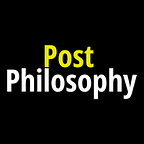Camus on Contemporary Art
“Art does not tolerate reason.”
Throughout his lifetime Albert Camus enjoyed visiting Museums and discussing artwork with artists. Museum Boijmans Van Beuningen is an art museum in Rotterdam in the Netherlands. The museum opened in 1849. It houses the collections of Frans Jacob Otto Boijmans and Daniël George van Beuningen. In the collection, ranging from medieval to contemporary art, are works of Rembrandt, Claude Monet, Vincent van Gogh, Salvador Dali, and Wolfgang Gantner (a.ka. The Shit Scuplturer).
On a hot summer day in June, there was a shit exhibition going on in Museum Boijmans Van Beuningen where you would be subjected to giant, imposing sculptures of turds. Albert Camus was intrigued when he first saw this Contemporary Art shit. So he asked around for the artist who did this shit: Wolfgang Gantner.
“Where is this value located?” Camus asked Gantner.
Gantner answered swiftly and excitedly: “One is a light-brown swirl pointing upwards that, from one angle, looks like the poop emoji. The second is a gigantic, dark-almost-black turd snaking its way from one room to the next while another is a three-layer construction with a gap wide enough for someone to crawl through. The last one is a big pile — somewhat meringue like — similar to the great heap of dinosaur dung in Jurassic Park that prompts Jeff Goldblum’s befuddled character to utter: That’s one big pile of shit.”
Camus: “It really is a big pile of shit, but do you really think that the value of art can be located? The work of art cannot be the end, the meaning, and the consolation of a life. Creating or not creating changes nothing. The work of art lacks importance.”
Gantner: “So you think that this shit lacks importance?”
Camus: “Well let me ask you this, how is the value of art justified? Is it an intrinsic value, or is it rather derived from some external source? Should we appreciate art because it arouses aesthetic experiences, because it communicates feelings, because it provides us with knowledge, because it leads to morally good actions?”
Gantner: “Allow me to elaborate, this shit as we present it is a sculptural subject, it’s not a joke. It’s such a limiting idea of sculpture because everybody knows what it is and what it looks like so it was very interesting for us to think of it as a sculptural form.”
Camus: “Yes, but what’s the intrinsic value? I see that there is none. Humans want to reach whatever ultimately answers the question ‘why’: Why getting up? Why catching the tram? Why going to work? Given this conception of meaning, the existence of the absurd (i.e., of humans striving for meaning which they cannot achieve) entails that nothing has intrinsic value. But if nothing has intrinsic value then art cannot have such value either.”
*Wolfgang Gantner was a bit confused at this point.*
Camus lit a Gauloises Red in the middle of the Museum and continued: “Various things are good in an extrinsic or more precisely instrumental sense. Art is one of these things. Art has extrinsic value to the extent that it fulfills both a certain cognitive and a certain moral function. In particular, it must promote our awareness of the absurd (i.e., make us see that humans strive for meaning but cannot achieve it) and our attitude of revolt (i.e., make us accept the absurd as a fact and reject it as a norm). In other words, art must lead us closer to the ideal of absurd existence.”
Gantner: “I think that the only thing we can agree on is that the sculptures are shit.”
Camus: “Agreed, but isn’t all art fundamentally ‘shit’? To work and create ‘for nothing’, to sculpture in clay, to know that one’s creation has no future, to see one’s work destroyed in a day while being aware that, fundamentally, this has no more importance than building for centuries — this is the difficult wisdom that absurd thought sanctions. Thus engaging in such creation provides any person with the opportunity of overcoming his phantoms and approaching a little closer to his naked reality.”
Gantner said: “Ok, you may be right. But perhaps the next time you’re in the toilet, you’ll think about the exhibition, I mean how great is that?”
Camus: “Yes I surely will. Allow me to clarify one more point and then I’ll leave you alone. In order for a process of creation to be ‘valuable’ it is required that the artist resists the temptation to explain the experiences that his/her work addresses. The absurd entails the futility of any attempt to reach perfect intellectual unity. However hard we try (scientifically, philosophically, etc.), we cannot get to the ultimate bottom of reality; we cannot reduce its divergent and complex phenomena to one single explanatory principle. All that we are left with is thus to ‘enumerate’ and ‘describe’ the experiences that we make. Works of art must not move beyond enumeration and description either. Only if they involve images rather than reasoned arguments, and only if they are a repetition of the themes already orchestrated by the world can the process of creating them promote the artist’s absurd existence. One must not wish first to understand and then to feel. Art does not tolerate reason.”
*Remark: This article is based on a real life exhibition by Wolfgang Gantner that took place in Museum Boijmans Van Beuningen in Rotterdam. Click this link to read more about the exhibition:
Instagram:
https://www.instagram.com/post.philosophy/Youtube:
https://www.youtube.com/PostPhilosophySupport me on
Patreon: https://www.patreon.com/postphilosophy
